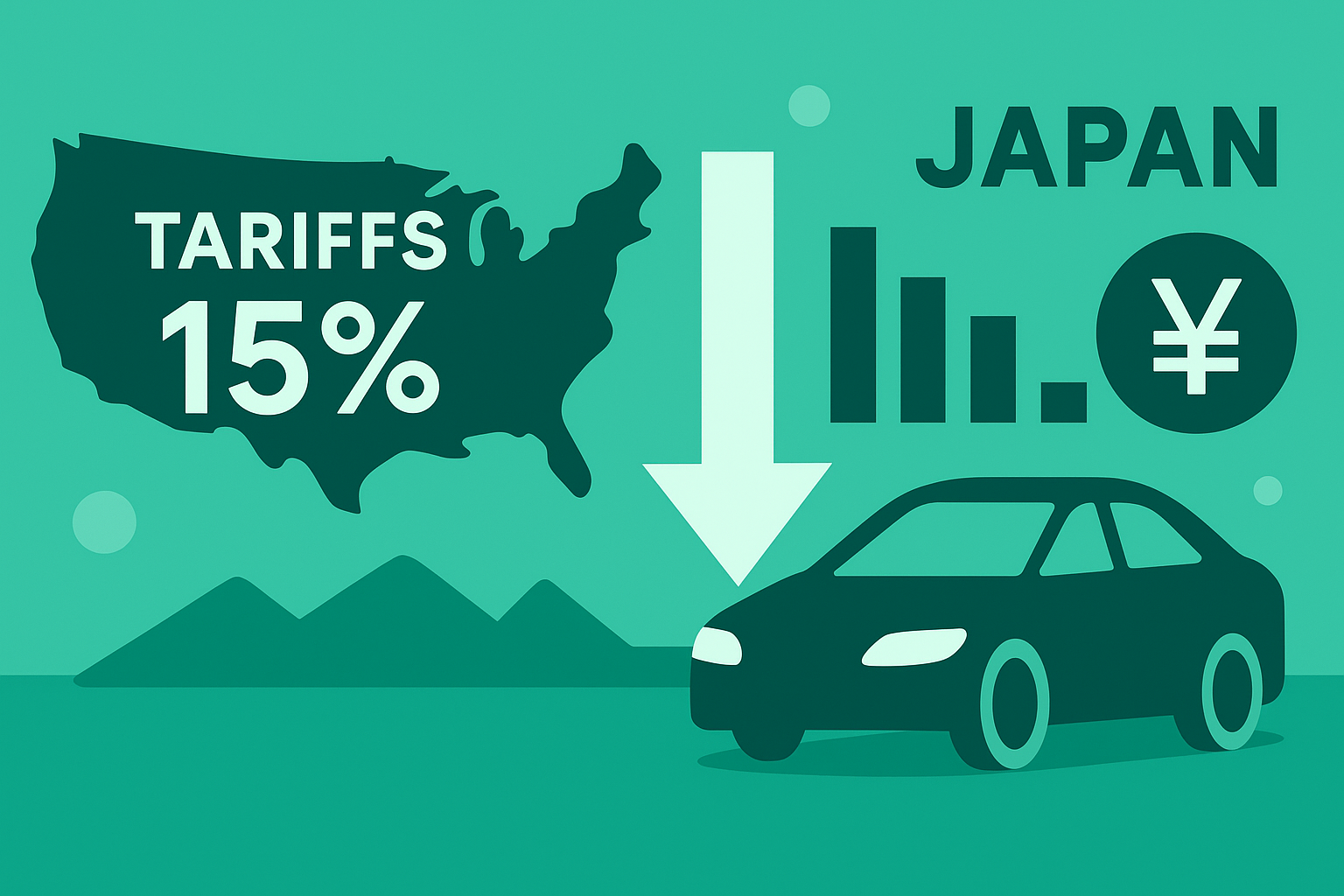Executive Summary
In July 2025, the U.S. and Japan agreed to lower auto tariffs from 27.5% to 15%. However, this remains significantly higher than the pre-Trump 2.5% level. August trade statistics already show a 13.8% decline in total exports to the U.S. and a 28.4% drop in auto exports, highlighting strong external headwinds.
Meanwhile, inflation stands at 2.7%, still above target, though easing due to lower fuel prices and a pause in yen depreciation. The Bank of Japan has kept its policy rate at 0.5% and is expected to hold steady for the remainder of the year.
Transmission Channels: How the Shock Spreads
1. Trade & Production
- Double Shock of Quantity and Price: If companies absorb tariffs, margins erode; if they pass them on, U.S. demand declines. Auto and semiconductor equipment shipments fell sharply in August.
- Supply Chain Spillovers: First- and second-tier suppliers in automotive parts, metals, and electronics are experiencing cost increases and order adjustments, slowing industrial production.
2. Corporate Behavior
- Shift to U.S. Localization: Automakers are investing in U.S. plants to avoid tariffs and strengthen political legitimacy. This, however, reallocates CAPEX away from Japan, softening domestic investment.
- Portfolio Adjustments: EV and high-end model launches in the U.S. are being revised, with some withdrawals or delays in product rollouts.
3. Prices & Monetary Policy
- Core CPI has slowed to 2.7%. The BOJ maintains a dovish stance, prioritizing financial stability over tightening.
Scenario Analysis (12-Month Outlook)
- Baseline (55%)
- Tariffs remain at 15%. Export drag persists but narrows, partly offset by EU and Asian demand. GDP growth trends around 0.5–1.0%, supported by domestic demand and public investment.
- Upside (25%)
- Expansion of tariff exemptions boosts auto shipments and business confidence. The BOJ could consider gradual rate hikes next year.
- Downside (20%)
- Tariff hikes or U.S. demand slowdown reignite export weakness, risking a temporary negative GDP growth phase with higher market volatility.
Sectoral Impact
- Automobiles & Parts: Margin squeeze and volume decline persist. Raising U.S. localization ratios and revising pricing strategies are urgent.
- Semiconductor Equipment: U.S. shipments weakening, diversification into EU and Asia is key.
- Materials (Metals, Chemicals): Export demand softens, though cheaper fuel costs provide a cushion.
- Logistics & Shipping: Route optimization toward Europe and the Middle East becomes critical for earnings.
Policy and Corporate Implications
Policy Priorities
- Trade: Push for expanded exemption lists and flexible rules of origin under NAFTA frameworks.
- Monetary: BOJ maintains current settings, closely monitoring tariff spillovers.
- Fiscal: Supplementary budgets should support capital investment tax breaks, SME financing, and employment adjustment subsidies.
Corporate Priorities
- Refined Pricing Models: Build granular demand elasticity frameworks by U.S. state and vehicle segment.
- Tariff Risk Accounting: Track and disclose “Tariff EBIT” by product category to guide resource allocation.
- Supply Chain Optimization: Reinforce a U.S.–Mexico production hub plus EU export diversification, adapting HS codes and parts sourcing to align with exemptions.
Key Monitoring Indicators
- Monthly export trends for autos and semiconductor equipment
- CPI and PPI deceleration, wage momentum sustainability
- BOJ policy board vote splits, fiscal stance under possible political shifts
Conclusion
The Trump tariff regime, even at 15%, imposes a triple challenge on Japan: weaker external demand, accelerated U.S. localization, and long-term risks of domestic industrial hollowing-out. Companies must act decisively through pricing precision, tariff-sensitive accounting, and supply chain re-engineering, while policymakers negotiate exemptions and reinforce domestic competitiveness.


